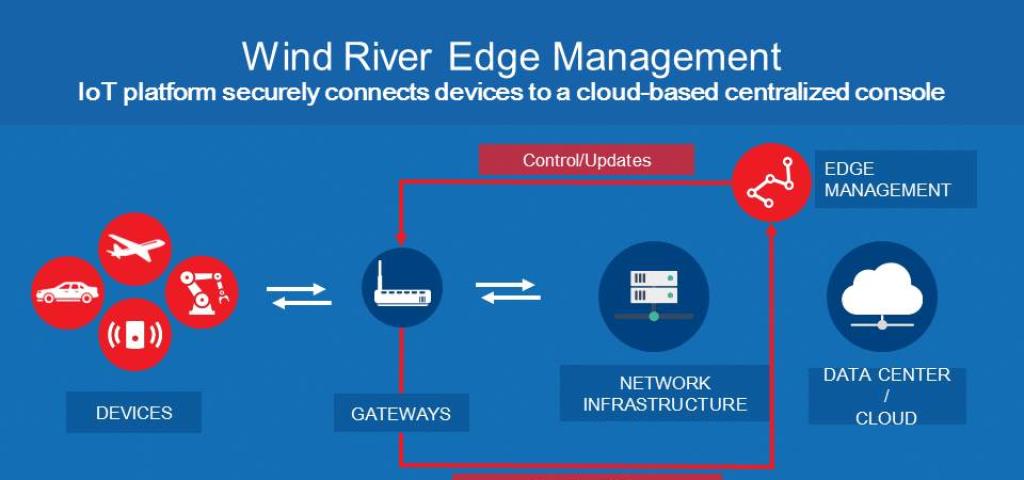
Gaining an “Edge” in the Internet of Things

The Internet of Things (IoT) is no longer a fanciful vision. It is very much with us, in everything from factory automation to on-demand entertainment. Yet by most accounts, the full potential of interconnected systems and intelligent devices for changing the way we work and live has barely been tapped. Up until now, IoT software solutions have largely had to be built from scratch with a high degree of customization to specific requirements, which has driven up the cost and complexity of development and deterred many prospective entrants to the market. What have been missing are developer tools that alleviate the costs associated with building the foundational infrastructure—the “plumbing” of their solutions—so they can focus on optimizing the core functionality and bring solutions to market more quickly with less cost.
Businesses of all sizes and across a variety of sectors have begun to realize the potential of IoT. Driven by the convergence of cloud technology, rapidly growing data volumes, and connected, intelligent devices communicating with each other, IoT is transforming existing business and revenue models and generating new ones. It is the new driver of business value, enabling organizations to more effectively leverage their data, innovate in services, multiply productivity and efficiency, improve real-time decision making, and solve critical problems.
Consider just one key benefit made possible by IoT: predictive maintenance. Sensors in remote pieces of equipment in the field—the “edge” of the Internet of Things—can deliver a steady stream of intelligence on the health of the equipment, and alert operators in a central location when a piece is showing signs of wear. The equipment can be adjusted or repaired—often remotely—before it fails. This reduces the risk of lengthy downtime and also cuts down on the number of “truck rolls” (maintenance crews having to go out for routine inspections or repairs). The greater the distance between the edge devices and the operator, the greater the value realized.
Opportunities and Challenges
The projected growth of IoT solutions creates vast new opportunities for developers of embedded systems. As devices become more powerful with technology, and more resource-constrained with the rising popularity of wearables, a more diverse set of devices will reside on the edge and need to rely on solution vendors seeking to connect, manage, and secure the devices.
As often happens, however, these opportunities bring with them a host of challenges. Developers need to build devices that allow seamless connectivity with one another. They need to address security risks to protect highly interconnected, often wireless systems from intrusion while ensuring performance and reliability. And the race to deliver effective solutions will be highly competitive, putting pressure on developers to offer differentiated products with leading-edge features and capabilities, and bring them to market faster.
A significant challenge in developing IoT solutions is the ability to centrally manage edge devices. In IoT “constellations”—networks with perhaps thousands to millions of end points—management of devices at the edge requires intelligence throughout the system, including device-level execution capabilities, remote management and provisioning capabilities at the gateway, and cloud-based delivery of software updates.
Edge Management
Until now, costs, complexity, and time-to-deployment challenges have imposed serious barriers to entry into IoT for many organizations. IoT solutions have tended to be highly customized to specific vertical applications, which adds to both the upfront development and ongoing maintenance costs, as well as to the length of development projects.
Today at the Intel IoT Insights event, Wind River unveiled Wind River Edge Management System, which stands to break down those barriers. Edge Management System is a cloud-based middleware stack that serves as a centralized console for an IoT solution, monitoring and exchanging data with edge devices. It has been validated to work out-of-the-box with all Intel® IoT Platform components, as well as other IoT vendors’ components.
Edge Management System divides edge management into two planes: the data plane and the management plane. The data plane focuses on gathering data from the edge—for example, sensor data or metadata related to device health. The management plane focuses on such activity as device provisioning, on-boarding, and lifecycle management. It also enables engineers to access devices remotely and reset them if problems arise. This device manageability component is what differentiates the Wind River solution from existing IT platforms available.
Edge Management System enables developers to leapfrog having to build their own infrastructure and custom-code their own software for the technology stack, installing the “plumbing” that has to be in place in order for the solution to be developed and deployed. In so doing, it dramatically reduces the cost, time, and engineering resources required for development.
Just as the Internet of Things presents businesses in all industries with opportunities for innovation, it also presents tremendous opportunities for developers of embedded systems and IoT solutions. Developers who can meet the demand for reliable, secure, and readily manageable IoT solutions, quickly and at a fair cost, are the ones who stand to benefit. Wind River IoT-optimized solutions like Edge Management System give developers the competitive edge needed to capitalize on opportunities in this rapidly growing market.
To learn more about how Wind River is addressing the opportunities and challenges created by the Internet of Things, visit http://iot.windriver.com.

